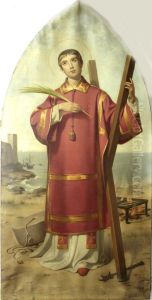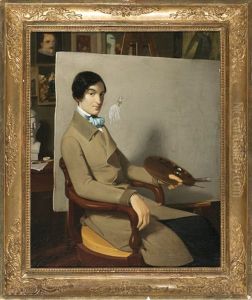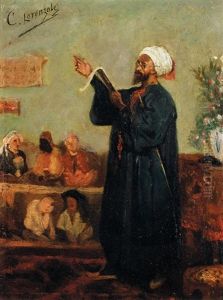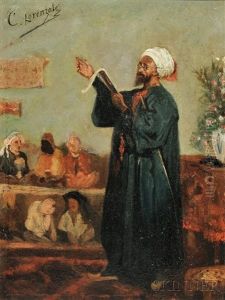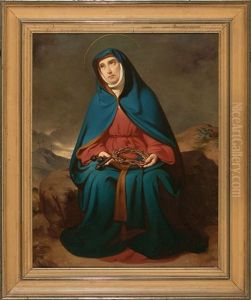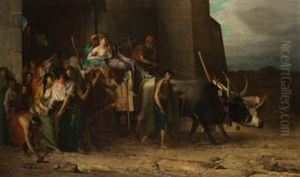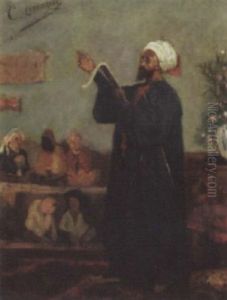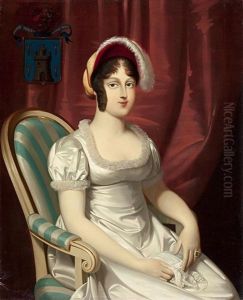Claudio Lorenzale Paintings
Claudio Lorenzale was a Spanish painter, illustrator, and educator, recognized primarily for his contributions to the Romantic movement in Catalonia, Spain. He was born on May 11, 1814, in Barcelona and became one of the most significant figures in the Catalan art scene of the 19th century. Lorenzale's works were deeply influenced by medievalism and the Italian Nazarenes, a group of early 19th-century German artists who aimed to revive honesty and spirituality in Christian art.
Lorenzale's early education was at the Escola de la Llotja in Barcelona, where he studied under the neoclassical painter Josep Bernat Flaugier. His style, however, diverged significantly from his teacher's, as he sought inspiration from the art of earlier periods and aimed to infuse his works with a spiritual and romantic essence. In 1836, Lorenzale received a scholarship to study in Rome, where he was profoundly influenced by the Nazarenes. This impact is evident in his meticulous technique, his use of bright colors, and the religious fervor of his subjects.
Upon returning to Barcelona in 1844, Lorenzale became a key figure in the promotion of the Gothic revival in art and architecture. He contributed to Catalan cultural and political identity through his art, which often depicted historical and religious themes with a romantic sensibility. His best-known works include 'Martyrdom of Saint Eulalia' (1844) and a series of illustrations for a publication of 'The Divine Comedy' by Dante Alighieri. Throughout his career, Lorenzale remained committed to the idea that art should serve moral and didactic purposes.
In addition to his work as an artist, Lorenzale also had a significant impact as an educator. He became a professor at the Escola de la Llotja, where he had once been a student, and later served as the director of the school. His teaching and his dedication to the study of historical art styles had a lasting influence on the next generation of Catalan artists, including the young Pablo Picasso, who briefly attended the institution during Lorenzale's tenure.
Lorenzale's later years were marked by increasing isolation from the art community, as the tides of artistic fashion shifted away from his romantic and medievalist ideals. Despite this, his legacy continued in the form of his students and through the preservation of his artworks in various Spanish institutions. Claudio Lorenzale passed away on March 28, 1889, in Barcelona. Today, his work is recognized as an integral part of the Catalan Romantic movement and an important precursor to Modernisme, the Catalan variant of Art Nouveau.
